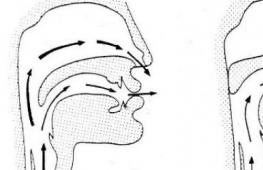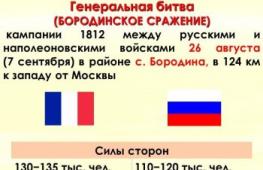Physicists have proven that the matrix does not exist. Scientists have disproved the theory about the unreality of our universe
When Tesla and SpaceX founder Elon Musk made a fuss during Code Code 2016, declaring a high probability that humanity exists inside an artificial, virtual universe, the public reacted very strongly. Fans of The Matrix were delighted, while others were horrified. Alas, new research has shown that there is no supercomputer that supports the existence of millions of people in a simulation of reality, and cannot be. It's not about philosophy or a special way of looking at life - just the bare facts.
Is The Matrix a lie?
A recent study by theoretical physicists from Oxford University which was published in the journal Scientific Advances just last week, finally confirms that life and reality are not products of computer simulations. Researchers led by Zohar Ringel and Dmitry Kovrizhi came to this conclusion after noticing a new connection between gravitational anomalies and the complexity of quantum computing.
Proponents of a simulated universe theory, such as Musk himself and the popular astrophysicist Neil DeGrasse Tyson, often point to the ever-increasing capabilities of modern computer systems as proof that reality can be emulated. In concept simulated universe, which became popular thanks to the British philosopher Nick Bostrom back in 2003, it is likely that in a hypothetical future, high advanced civilizations will develop realistic virtual simulations that create the illusion of past eras. For us, this “past” is quite present, and it would be appropriate to compare the simulations themselves with computer games, also recreating interactive pictures of ancient civilizations.
However, according to a new study, the creation of such a complex simulation is seen by scientists as impossible even in theory. The reason is simple: in the part of the universe known to us, there are simply no elements capable of forming mechanisms with such high computing power to model something so colossal.
Reality or Simulation: Physics vs. Fiction
The Oxford team asked the question: is it possible to build a computer simulation powerful and complex enough to show the quantum effects of many physical bodies? For those who are poorly versed in quantum physics, we explain that in our Universe the number of interactions of quantums with each other is so large that it simply defies description. In particular, the scientists tested an anomaly known as the quantum Hall effect using the Monte Carlo method, a computational technique that uses random sampling to study complex quantum systems.
The researchers found that in order to accurately model the quantum phenomena that occur in matter, the system must be extremely complex. This complexity increased exponentially as the number of particles needed to model the full picture increased. As a result, it became clear that this impossible purely physically - and this despite the fact that physicists included in their calculations only a part known to mankind world, not the entire universe. Scientists emphasized that in order to store complete information, even about a couple of hundred electrons, computer memory is needed with more than there is in the world. However, the possibility cannot be ruled out that some physical property(meaning the characterization of a hypothetical simulation) specifically creates an obstacle to efficient classical simulation of many-particle quantum systems,” they write.
The physical limitation demonstrated by the researchers is enough to nullify all hypotheses about the superintelligence, forcing people to live in a huge computer simulation. Contrary to the claims of Musk or Tyson, the achievements of mankind, apparently, are still the merit of the people themselves and their painstaking work, and not a pre-written program that leads the development of mankind along a course set from above.
However, it cannot be argued that a person has known the Universe so well to make such statements with 100% certainty. The assumption of probabilities, even fantastic ones, is one of the qualities due to which people make more and more breakthroughs in science, pushing the border of the “impossible” further and further over and over again.
Is it really possible to have a moving physical object with zero energy? From the point of view of common sense, this is impossible, because the movement itself is kinetic energy. Such an obvious physical fact, challenged the concept of quantum space-time crystals, which was proposed in 2012 by physicist and Nobel Prize winner Frank Wilczek of Massachusetts Institute of Technology. These space-time crystals are theoretical quantum systems that oscillate periodically while in the standard state, the lowest energy state.
The idea of creating a quantum space-time crystal turned out to be so attractive that a group of physicists from University of California at Berkeley even took up preparations for the creation of an experimental setup in which the role of a crystal was played by calcium ions trapped in an annular ion trap. Under the influence of extremely weak magnetic field the calcium ions were supposed to begin a slow rotation, while being in the lowest energy state. Theoretically, the rotation of such a system can continue indefinitely, even after the thermal death of the Universe, because such a system does not absorb or emit energy.
But, like any exotic physical theory, the theory of space-time crystals, in addition to adherents, has ardent opponents. One of the opponents of this theory is the famous physicist Patrick Bruno (Patrick Bruno), who works in the laboratory of the European Synchrotron Radiation Facility, located in Grenoble, France. Bruno has repeatedly pointed out some "holes" in the theory of space-time crystals, and not so long ago he did not leave stone unturned from this theory, creating his own "stop theory", which completely excludes the possibility of infinite rotation of a wide class of systems located in standard state, which can be called space-time crystals.
According to Bruno's theory, the concept of space-time crystals has two main shortcomings. First, the rotating solitron (single wave impulse) that Vilkzek describes in his model is not in a standard, but in a higher energy state. Secondly, the system that makes rotary motion, albeit being in the standard state, can radiate energy into the surrounding space in the form electromagnetic waves, which in itself is in conflict with the law of conservation of energy.
As the main argument of his theory, Bruno demonstrates that setting in motion a ring system of quantum particles around the ring of a magnetic trap will in any case increase the energy of the entire system, moving it from a standard to a higher energy state. Bruno believes that this is evidenced by the description of rotating systems described in the works of Nobel Laureate Anthony Leggett, who studied the properties of rotating superfluids, liquids with an infinite flow coefficient.
Bruno thinks that his first argument should come as no surprise, since a theory developed in 1964 by another Nobel Laureate, Walter Kohn, states that insulating materials are completely insensitive to magnetic fluxes and to their change. Since quantum space-time crystals are modeled as Wigner crystals, and Wigner crystals are known to be insulators, the magnetic flux and magnetic field cannot make the space-time crystal system rotate.
"I believe that by developing my "stopping theory", I put an end to the theory of the possibility of the existence of rotating space-time crystals. I am sorry that a lot of my time and the time of other scientists was spent on this initially incorrect theory. I have no plans to continue work in this direction, but if someone comes up with alternative options that do not conflict with existing theories, I will be happy to return to this topic again," writes Bruno.
Sign-preserving operations on two-dimensional grids
Zohar Ringel, Dmitry L. Kovrizhin / Science advances
In some quantum systems, the sign problem is fundamentally unsolvable. This means that they cannot be efficiently simulated on classical computers. Two physicists, including one from the Kurchatov Institute, have shown that such a problem arises from gravitational anomalies in systems with bosonic degrees of freedom, such as the fractional Hall effect. Article published in the journal Science Advances.
It is traditionally believed that all problems that can be efficiently solved on a classical computer can be solved just as efficiently on quantum computer, but not vice versa. For example, effective classical simulators have not yet been found for many systems with bosonic degrees of freedom that arise naturally when studying models of interacting quantum many-body systems (quantum many-body systems). IN new job scientists have shown that the absence of such simulations is due not to a lack of ingenuity of researchers, but to the fundamental impossibility of their existence.
The authors of the article note that proving the impossibility of classical simulations in general is an ill-defined problem. Therefore, they showed that fundamental problems arise when using the most common method of numerical research in the field, the quantum Monte Carlo method. The main tool of this method is the generating functional (partition function , should not be confused with the partition function from statistical mechanics). Knowing it, with the help of differentiation it is easy to find the correlation functions of the system. However, it turns out that the calculation of the functional is not always possible due to the sign problem when the phases of the integrands change rapidly.
The basic idea behind the physicist's proof is based on the concept of anomalies. Anomalies are peculiar effects that occur when the symmetry that is present at the level of classical field theory is violated at the level of quantum field theory. Both the usual Hall effect and the temperature (Rigi-Leduc effect, thermal Hall effect) can be understood in terms of anomalies - charge and gravitational (gravitational anomaly, the adjective "gravitational" appears due to the general covariance of the theory, and not due to gravitational effects ) respectively.
Often, when linking anomalous theories with static gauge fields, it can be found that flows of the gauge field lead to the appearance of complex phase factors in the generating functional. This makes it impossible to construct a generating functional without a sign problem, in which complex phases are forbidden by definition. However, this is not always the case, and there are various counterexamples. The subtlety lies in the fact that complex phases may arise not in the original theory, but as a result of the addition of a gauge field flux.
The proof that for the classical generating functional in the 2 + 1-dimensional theory of the bosonic fractional quantum Hall effect on a plane or on a torus it is impossible to get rid of the sign problem, physicists carried out in three steps. First, they established that gravitational anomalies cause chiral excitations at the boundary of the volume under study. They then showed that the existence of a spatially isolated chiral channel in this theory forbidden provided that the translation operator and the Perron-Frobenius operator are non-negative. At the same time, the existence of an unsigned generating functional (that is, one in which there is no sign problem) leads to the non-negativity of these operators. Thus, the obtained contradiction testifies to the impossibility of circumventing the sign problem in this theory.
Next, physicists looked at frustrated quantum systems, in which states similar to those arising from the fractional Hall effect appear due to spontaneous breaking of time symmetry (time-reversal symmetry). For example, such systems include Kagome quantum antiferromagnets. In general, the above considerations apply to them, although some additional microscopic assumptions need to be made.
Thus, scientists have shown that for a wide class of quantum systems, when calculating using the quantum Monte Carlo method, it is fundamentally impossible to get rid of the sign problem. This means that such systems cannot be effectively simulated using conventional, classical computers. Perhaps this obstacle can be overcome in the future with the help of quantum computers.
Recently, we talked about how physicists solved the sign problem with the help of a neural network in the 1 + 1-dimensional Thirring model.
Dmitry Trunin
The hypothesis of a computer simulation of our universe was put forward in 2003 by the British philosopher Nick Bostrom, but has already received its followers in the person of Neil deGrasse Tyson and Elon Musk, who said that the probability of the hypothesis is almost 100%. It is based on the idea that everything that exists in our universe is the product of a simulation, similar to the experiments carried out by machines from the Matrix trilogy.
Simulation theory
The theory suggests that, given enough computers with great computing power, it becomes possible to simulate in detail the entire world, which will be so believable that its inhabitants will be conscious and intelligent.
Based on these ideas, we can assume: what prevents us from already living in a computer simulation? Perhaps a more advanced civilization is conducting a similar experiment, having received the necessary technologies, and our whole world is a simulation?
Many physicists and metaphysicians have already created convincing arguments in favor of the idea, referring to various mathematical and logical anomalies. Based on these arguments, one can assume the existence of a space computer model.
Mathematical refutation of the idea
However, two physicists from Oxford and the Hebrew University in Jerusalem, Zohar Ringel and Dmitry Kovrizhin, proved the impossibility of such a theory. They published their findings in the journal Science Advances.
By modeling a quantum system, Ringel and Kovrizhin found that simulating just a few quantum particles would require huge computational resources, which, due to the nature of quantum physics, would increase exponentially with the number of simulated quanta.
A terabyte of RAM is required to store a matrix describing the behavior of 20 spins of quantum particles. Extrapolating this data over just a few hundred spins, we find that it would take more atoms to build a computer with that much memory than there are. total number in the Universe.
In other words, given the complexity of the quantum world that we observe, it can be proven that any proposed computer simulation of the universe will fail.
Or maybe it's a simulation?
On the other hand, continuing philosophical reasoning, a person will quickly come to the question: “Is it possible that more advanced civilizations deliberately put this complexity of the quantum world into the simulator in order to lead us astray?” Dmitry Kovrizhin answers this:
This is an interesting philosophical question. But it is outside the scope of physics, so I would prefer not to comment on it.



